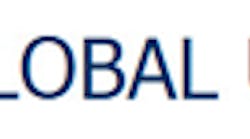“The Shell Prelude floating liquefied natural gas (FLNG) is the largest floating thing in the world, six times the size of an aircraft carrier, but it has only 100 people on board caring for it. How can they do this?” asked Jonas Berge, director, applied technology, Emerson Automation Solutions. “A team in Perth, Australia—1,100 miles away—watches over equipment and advises them. Along with the travel, cost and danger savings, those people in Perth get to go home at the end of the day and see their families. What’s that worth?”
Berge was speaking to a room packed with attendees of his session, “Modernize Your Plant with IIoT at Your Own Pace,” at the Emerson Global Users Group Exchange 2016 this week in Austin, Texas. “You’ve heard a lot about what people call the Industrial Internet of Things (IIoT),” he said. “Some plants are already benefitting.”
A classic example is the Shell Malampaya offshore platform in the west Philippine Sea, where smart positioners allow valves to be monitored from onshore. The information also goes to the company intranet, so Shell personnel around the world can log on, see it and help the platform personnel.
Remote coal seam gas fields in Australia have gas chromatographs that need to be working and in calibration. “Each day one is not can cost up to $100,000,” Berge said. To check one takes a one- to three-day trip, and they’re usually OK. “Now, with IIoT, we can dial into the chromatographs, check their diagnostics and see which are fine and which need calibration.” That’s worth about $6,000 per saved trip.
Emerson also is monitoring chemical plants from a center in Singapore. “Wireless monitors allow us to advise a Denka chemical plant within a couple of days if a steam trap needs service,” Berge said. “In the past, a trap could be leaking steam for a year before they discovered the problem. The program has reduced steam consumption by 7%.”
[sidebar id =1]Berge defined six steps to put a plant on the IIoT:
1. Define or install plant-wide digital sensor networks
2. Instrument the assets
3. Deploy predictive analytics software on-premises
4. Review work processes
5. Enable a private internet of things
6. Introduce IIoT business models
Pervasive sensing calls for digital networks throughout the plant. “Using 4-20 mA for hundreds or thousands of additional sensors is impractical,” Berge said. “If you have fieldbus already in place, you can use it to add sensors. If not, consider WirelessHART to get additional measurements for reliability, energy efficiency and other uses. Replace manual data entry by automating data collection for applications like vibration, corrosion and power.”
Instrument the assets. Consider applications to improve results in reliability (maintenance), efficiency (energy and loss control), operations (productivity), and environmental, health and safety (EHS). “Operations and EHS will mostly be for on-premise consumption,” Berge said. “Reliability and efficiency are candidates for IIoT, where putting it in the cloud makes it possible to involve outside expertise.”
You want to install technology with a purpose, not indiscriminately deploy thousands of sensors. “So we conduct a plant modernization audit: Sit down with all the relevant departments and find out what they need,” Berge said. “This is not a site walkdown, just a meeting and interview. Based on that, we can figure out roughly how many sensors, and the network size.”
Deploy software applications. Much of the data needs no interpretation, just to be displayed to operators or supervisors. Some needs multiple measurements over time to be combined and calculated, such as a heat exchanger where flow, temperatures and differential pressures are used to determine heat transfer coefficients. “Turn existing equipment into smart, connected assets,” Berge said. “For example, instrument a pump for pressure, flow, seal pressure, motor temperature, power, etc.”
Change standard operating procedures. “People have to change their behavior or it’s all no good,” Berge said. The same as you now Google, check Yelp and use a GPS before you set off to find a restaurant, you need to “Google your pump” before you go into the field. Equipment generates alarms--you need alarm management for maintenance similar to what you use for controls. “Set priorities and make alarms actionable, so they tell you what to do,” Berge said.
Enable a private intranet of things. Companies can put in centers of excellence to monitor equipment at multiple sites so they don’t need as many experts at each site. A single center can handle sites around the world, and the information is accessed only by company employees.
Use an Internet of Things. Outsource to experts such as Emerson and vendors of different types of equipment. “Emerson can now go beyond just giving you a report—we can go there and fix it,” Berge said. “We look only at the equipment information, not process data, so you’re not revealing any process secrets.”
There are multiple ways to do the necessary information technology/operations technology (IT/OT) integration—the connection between the instrumentation and the internet. “Generally, both areas of expertise are involved, but there are ways of working around that,” Berge said. IIoT can be independent of the control system, so there is no connection, “like we do with the steam trap monitors at Denka,” Berge said. “It’s completely separate. They didn’t even buy any hardware—not a single screw. We provide the service on a per-point, per-month basis.”
In other cases, “We can send historian data directly to the cloud, or we can send up the DCS data,” Berge said. Either way, “We can use ‘data diodes’ so only the desired data leaves, and nothing comes in.”
It can all be done on a three-year plan. “If you haven’t already, try wireless, and have us help you do a modernization audit,” Berge said. “Make sure your solution is compatible with your existing equipment—there’s no need to bulldoze your historian or replace what you already have. And get started.”




